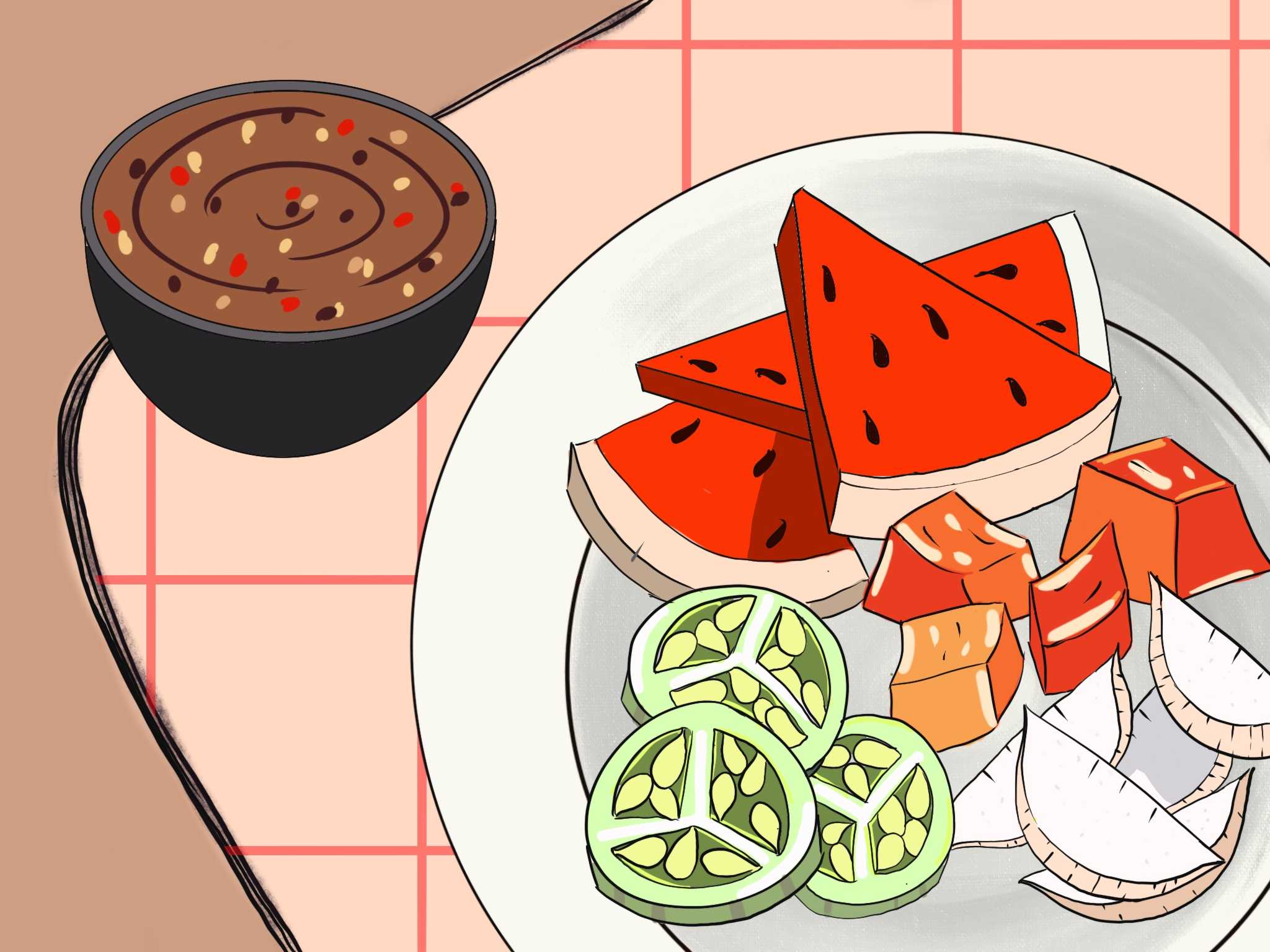by Isha Karim (’22) | March 29, 2021

Spring has sprung. It’s my favorite time of the year, mainly because my favorite produce begins to come back into season after an awfully long winter. Armed with a boatload of fruits from my local grocery store, I’ve been on a journey to find something to do with those fruits. Since I don’t possess the skills of a baker or the creativity of a chef, the most I can do to transform an assortment of fruit is—to be quite frank—cut it. So upon investigation, I was delighted to discover a Javanese dessert with a twist: spicy fruit. One of my favorite memories surrounding fruit is eating unripened mangoes with salt and chili powder, and the perfect emulation of that is in rujak buah, or fruit rujak, a Javanese dessert beloved in Indonesia, Malaysia, and Singapore.
Rujak, or rojak in the Malay spelling, is a salad dish composed of a mixture of sliced fruit and vegetables served with a spicy palm sugar dressing. Rujak, like a salad, has various preparations, some more sweet than spicy, others containing prawn paste or certain meats. In Indonesia, fruit rujak is known as rujak buah. Typically, it consists of slices of assorted tropical fruits such as water apples, pineapples, unripe mangoes, jicama, cucumber, or sweet potato. Preparations of rujak vary from region to region, some adding green apples, starfruit, or pomelo depending on locally sourced ingredients.
Although California is the leading producer of popular fruits like avocados and grapes, we, unfortunately, don’t have access to all kinds of fruit around the globe. Hand of Buddhas or pomelos, while popular citrus fruits in Southeast Asian cuisine, are unfortunately difficult to source in the United States. As such, I sought to find creative replacements for these fruits that would match their texture and flavor profile. To replace the sour, borderline bitter taste of pomelos, I substituted in a mixture of grapefruit and kiwis. Although also difficult to source in California and not presented in an authentic rujak, the caviar of finger lime, native to Australia, would be a perfect addition as a sour pop in your mouth—quite literally.
What surprised me the most, however, was the rujak dressing. The sweet and spicy dressing is composed of water, palm, sugar, tamarind, crushed peanuts, and miscellaneous chilies, mainly bird’s eye chili and red chili. Although I added some salt to taste, the flavor profile of the dressing was unlike anything I’ve ever had before, despite being a veteran of many different spices. The combination of bird’s eye and red chilies, along with the crushed peanuts, left the dressing on distinctly the savory side. However, the addition of the tamarind and palm sugar counteracted the spicy-hot taste with a mouthwatering, albeit slightly sweet, dressing. For a fruit salad, this is the extent to which I would go to make these fruit assortments shine. The crunch of the kiwi seeds along with the peanuts from the dressing lent rujak the perfect qualities as the top spring dessert for early dinner Sundays.
The way that the rujak dressing makes the fruit shine is marvelous. It makes the fruit sing without having to hold its own as just another fruit salad.








































































